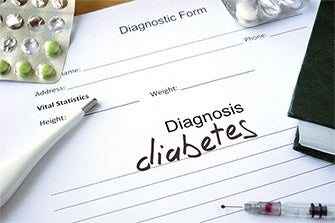If you’re like most of us, you probably get inundated with health information all the time from your social media feeds, your local news outlets, your family, your friends… The list goes on. Diabetes turns into just another health topic that gets drowned out in the statistical noise.
But did you know that nearly 10 percent of adults and children are affected by diabetes in the U.S.?
The CDC recently announced that 38 percent of Americans are obese, meaning they are beyond just being overweight. They also predict that by 2020 – a mere four years away – half of Americans will have either pre-diabetes or type 2 diabetes.
Did you also know that diabetes can double your risk of death for heart attack or heart disease? Diabetes is also the leading cause of kidney failure and blindness. And if you have diabetes, you have a 60-70 percent chance of mild to severe pain or disability from nerve damage.
These are important statistics!
There is good news, though! Type 2 diabetes is also both preventable and manageable, with the right help.
We sat down with Teresa Anderson, our resident dietician and certified diabetes educator, to get some of her thoughts on the matter.
“Most people who have controlled pre-diabetes or type 2 diabetes have no symptoms,” she told us. “They feel fine. Until suddenly, they don’t. Then it’s more like they have complications than symptoms.”
Some of the milder, more common symptoms of high blood sugars or blood glucose (BG) look very much like “getting old”:
- Tiredness
- Increased urination (preceded by increased thirst)
- Blurry vision
- Sores or infections that don’t heal
“When patients get tired of dealing with these symptoms, or their spouses do, or if it happens faster and stronger with acute BG (hyperglycemia), then they finally go to the doctor,” Teresa said. That’s when the doctor runs a bunch of labs and checks you against the following risk factors:
Are you
- Age 45 or older?
- Overweight (based on a BMI chart)?
- Not physically active (i.e. you get brisk exercise for 30 minutes five days a week)?
- African American, Latino, Native American, Asian American or Pacific Islander?
Do you have
- A family member (such as a parent, brother or sister) with diabetes?
- High blood pressure?
The labs the doctor runs will determine other less visible risk factors, including:
- Low “good” cholesterol (HDL)
- A high level of fats (triglycerides) in the blood
- A fasting BG of 100-125 (pre-diabetes) or 126+ (type 2 diabetes)
If, at this point, the doctor makes a pre-diabetes diagnosis, you have an almost certainty of progressing to overt type 2 diabetes within five years if you don’t make changes.
“There is no such thing as ‘borderline’ diabetes,” Teresa said. “There’s no ‘touch’ of diabetes, or ‘a little’ diabetes. Pre-diabetes is a diagnosis!”
But it can also be a life-changing diagnosis. “I have stories of all kinds of people that, when they are told about their diagnosis, they take it to heart and learn how to make the right changes,” Teresa said.
So what can you do if you have any of the above-mentioned risk factors?
“Get yourself tested,” Teresa said. “Then you can learn how to make the changes you need to either prevent or control diabetes.”
If you have just been diagnosed with diabetes or you have been living with it for a while, education and support are important to help you stay healthy. You need both throughout your lifetime, and not just at your diagnosis. Learning to manage your diabetes from the start can help you have fewer health problems from diabetes later on, and having a support network can help you better cope with the day-to-day demands of living with diabetes.
At the Diabetes and Metabolism Clinic, Teresa and her team work on finding the right diet, exercise program and, if necessary, the right medicine to help a patient’s body out. “They feel better, they lose weight, their numbers are under control and, most importantly, they feel in control of their health,” Teresa said.
To set up an appointment at the Diabetes and Metabolism Clinic, please call 505.727.6200.

